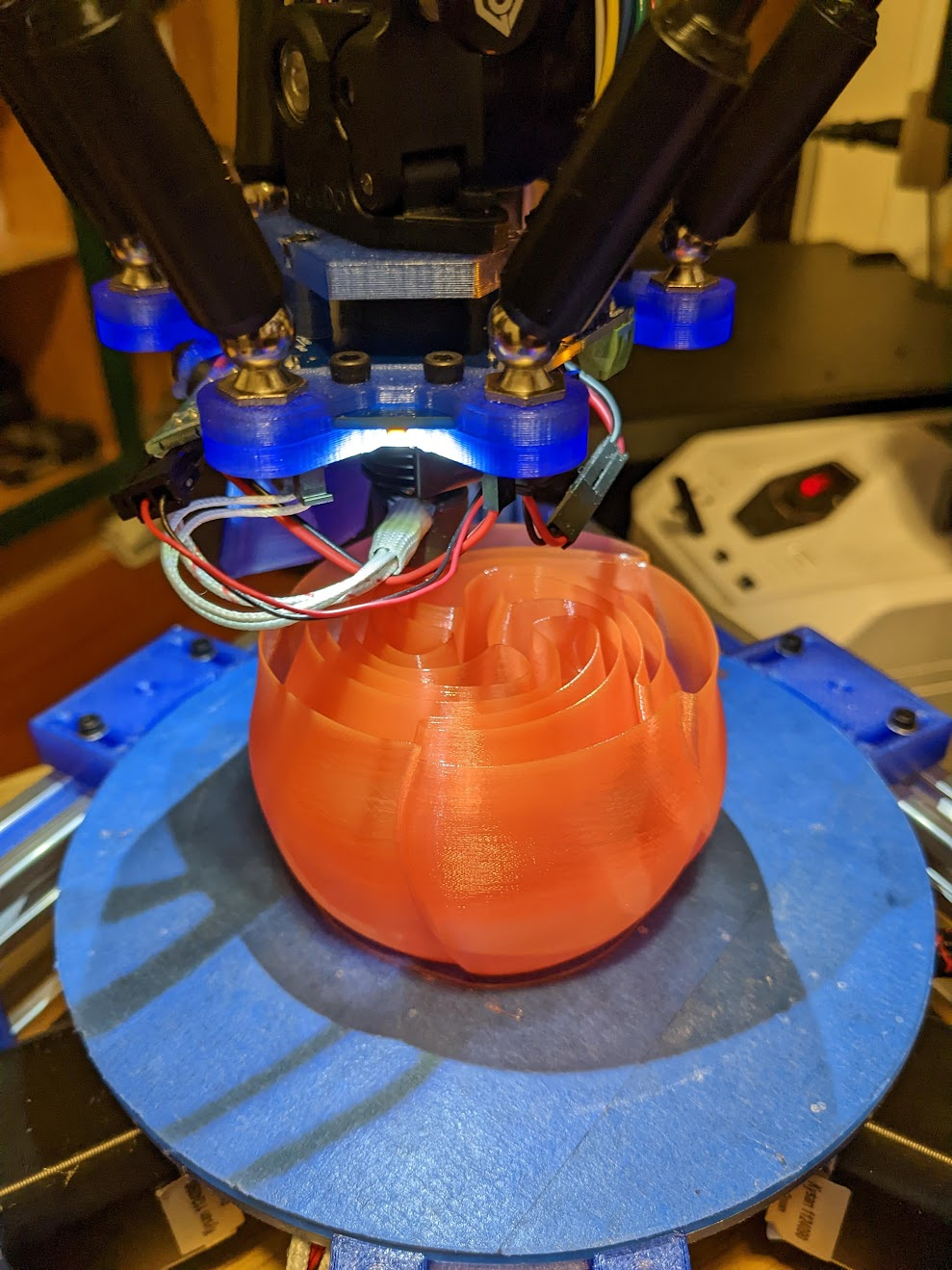T3P3 Mini Kossel
-
This is my first working delta build [1]. I learned a ton, but it is by no means a perfectly precise build, despite my best efforts. However, it does work, so I'll take it as a win.
The T3P3 kits are no longer available, so I sourced all of the parts independently, and upgraded parts where and when I thought appropriate. So this build has:
- A Duet 2 WiFi with 4.3" PanelDue
- Haydn Huntley's magball arms
- An Orbiter 2.0 extruder
- A 24V heated bed
- An E3D Revo Micro hotend


[1] My first actual build was based on Johann's original design with 1515 extrusions. I met him several years ago and he gave me a box of loose parts, most of which came from an incomplete OpenBeam kit. I eventually completed the build (that being my first substantial electronics project), but my first 4-5 layers came out very poorly. Despite replacing nearly every component in the build, I never did figure out what was causing the problem and eventually abandoned the build and started over.
-
@kjiwa thanks for posting this! I think it's fair to say this is well beyond the original Mini Kossel !
-
@kjiwa it looks good! What deviation does it report after G32, and which version Smart Effector did you use?
-
@kjiwa That vase mode rose looks very nice.
Robotdigg sells great aluminum brackets for deltas that will most likely improve both the precision and the rigidity of the build.
-
@dc42 Thank you! G32 reports a deviation of 0.066mm. I am using a v2 Smart Effector.
-
@dc42 What is considered an acceptable amount of deviation?
-
@kjiwa that depends on the layer height you want to use. My delta - which started life as a T3P3 Mini Kossel kit - routinely achieves less than 0.02mm and usually 0.01mm. I print using 0.2mm first layer height.